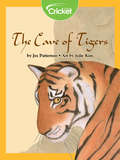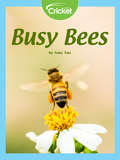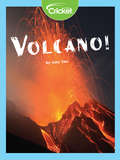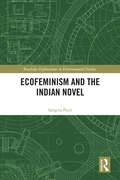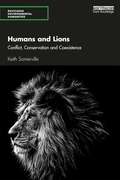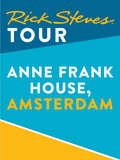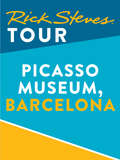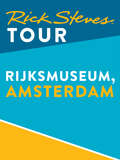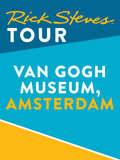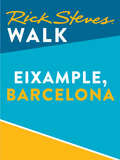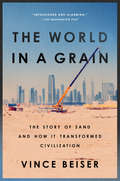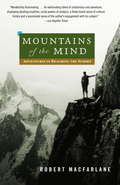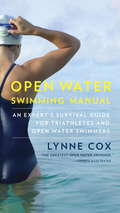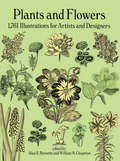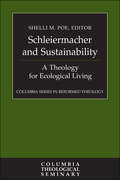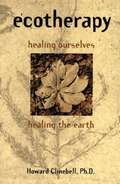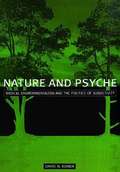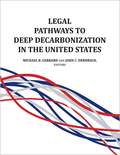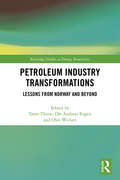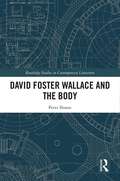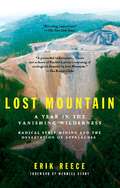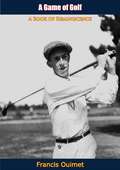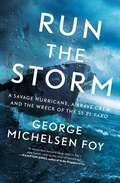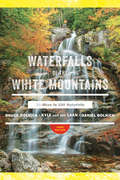- Table View
- List View
The Cave of Tigers
by Jez PattersonA young boy and a tiger visit a cave filled with paintings of tigers. There's even a picture of a tiger hunting a mammoth!
Busy Bees
by Amy TaoBees pollinate the flowers of the plants we eat. Without pollination, plants can't grow fruits and seeds. Which foods would you miss if we didn't have honeybees? So next time you're eating a meal, stop and thank the bees for their hard work!
Volcano!
by Amy TaoWhen volcanoes blow their top, watch out! They can blast out dangerous lava, rocks, ash, and steam that can contain clouds of poisonous gas. But when lava cools, it becomes rock, which in turn creates new land.
Ecofeminism and the Indian Novel (Routledge Explorations in Environmental Studies)
by Sangita PatilEcofeminism and the Indian Novel tests the theories of ecofeminism against the background of India’s often different perceptions of environmental problems, challenging the hegemony of Western culture in thinking about human problems. This book moves beyond a simple application of the concepts of ecofeminism, instead explaining the uniqueness of Indian novels as narratives of ecofeminism and how they can contribute to the development of the theory of ecofeminism. In examining a selection of novels, the author argues that Indian texts conceptualize the ecological crisis more as a human problem than as a gender problem. The book proposes that we should think of ecofeminism as ecohumanism instead, seeing human beings and nature as a part of a complex web. Novels analysed within the text include Kamala Markandaya’s Nectar in a Sieve (1954), Shivram Karanth’s Return to Earth (2002) and Na D’Souza’s Dweepa (2013). Ecofeminism and the Indian Novel will be of great interest to students and scholars of ecofeminism, ecocriticism, ecological feminism, environmental humanities, gender studies, ecological humanities, feminist studies and Indian literature.
Humans and Lions: Conflict, Conservation and Coexistence (Routledge Environmental Humanities)
by Keith SomervilleThis book places lion conservation and the relationship between people and lions both in historical context and in the context of the contemporary politics of conservation in Africa. The killing of Cecil the Lion in July 2015 brought such issues to the public’s attention. Were lions threatened in the wild and what was the best form of conservation? How best can lions be saved from extinction in the wild in Africa amid rural poverty, precarious livelihoods for local communities and an expanding human population? This book traces man’s relationship with lions through history, from hominids, to the Romans, through colonial occupation and independence, to the present day. It concludes with an examination of the current crisis of conservation and the conflict between Western animal welfare concepts and sustainable development, thrown into sharp focus by the killing of Cecil the lion. Through this historical account, Keith Somerville provides a coherent, evidence-based assessment of current human-lion relations, providing context to the present situation. This book will be of interest to students and scholars of environmental and African history, wildlife conservation, environmental management and political ecology, as well as the general reader.
Rick Steves Tour: Anne Frank House, Amsterdam (Rick Steves)
by Rick Steves Gene OpenshawRick Steves' Tours eBooks are straightforward, self-guided tours of some of Europe's most popular museums, ancient buildings, and other points of interest, designed for easy reference on your mobile device or eReader. In Rick Steves' Tour: Anne Frank House, Amsterdam-for less than the price of a cappuccino-Rick shares his candid advice on how to get the most out of a visit to the Ann Frank House, including when to go, how much it costs, and what's worth your time once you're there. With Rick's knowledgeable, humorous writing in hand, you'll also learn some interesting historical facts about the museum along the way. Packed with indispensable tips and recommendations from America's expert on Europe, Rick Steves' Tour: Anne Frank House, Amsterdam is a tour guide in your pocket-and on your smartphone.
Rick Steves Tour: Picasso Museum, Barcelona (Rick Steves Tour)
by Rick StevesRick Steves' Walks eBooks are straightforward, self-guided walking tours through some of Europe's most popular destinations, designed for easy reference on your mobile device or eReader. In Rick Steves' Tour: Picasso Museum, Barcelona-for less than the price of a cappuccino-Rick shares his candid advice on how to get the most out of a visit to the museum, including when to go, how much it costs, and what to keep an eye out for once you're there. With Rick's knowledgeable, humorous writing in hand, you'll also learn some interesting historical facts about Pablo Picasso along the way. Packed with indispensable tips and recommendations from America's expert on Europe, Rick Steves' Tour: Picasso Museum, Barcelona is a tour guide in your pocket-and on your smartphone.
Rick Steves Tour: Rijksmuseum, Amsterdam (Rick Steves)
by Rick Steves Gene OpenshawRick Steves' Tours eBooks are straightforward, self-guided tours of some of Europe's most popular museums, ancient buildings, and other points of interest, designed for easy reference on your mobile device or eReader. In Rick Steves' Tour: Rijksmuseum, Amsterdam-for less than the price of a cappuccino-Rick shares his candid advice on how to get the most out of a visit to the Rijksmuseum, including when to go, how much it costs, and what's worth your time once you're there. With Rick's knowledgeable, humorous writing in hand, you'll also learn some interesting historical facts about the museum along the way. Packed with indispensable tips and recommendations from America's expert on Europe, Rick Steves' Tour: Rijksmuseum, Amsterdam is a tour guide in your pocket-and on your smartphone.
Rick Steves Tour: Van Gogh Museum, Amsterdam (Rick Steves)
by Rick Steves Gene OpenshawRick Steves' Tours eBooks are straightforward, self-guided tours of some of Europe's most popular museums, ancient buildings, and other points of interest, designed for easy reference on your mobile device or eReader. In Rick Steves' Tour: Van Gogh Museum, Amsterdam-for less than the price of a cappuccino-Rick shares his candid advice on how to get the most out of a visit to the Van Gogh Museum, including when to go, how much it costs, and what's worth your time once you're there. With Rick's knowledgeable, humorous writing in hand, you'll also learn some interesting historical facts about the museum along the way. Packed with indispensable tips and recommendations from America's expert on Europe, Rick Steves' Tour: Van Gogh Museum, Amsterdam is a tour guide in your pocket-and on your smartphone.
Rick Steves Walk: Eixample, Barcelona (Rick Steves Walk)
by Rick StevesRick Steves' Walks eBooks are straightforward, self-guided walking tours through some of Europe's most popular destinations, designed for easy reference on your mobile device or eReader. In Rick Steves' Walk: Eixample, Barcelona, Rick shares his candid advice on how to get the most out of a walk through the Eixample's "Golden Quarter"-including where to start, how much time you need, and what's worth stopping for-all for less than the cost of a cappuccino. With Rick's knowledgeable, humorous writing in hand, you'll also learn some interesting historical facts about the things you encounter along the way. Packed with indispensable tips and recommendations from America's expert on Europe, Rick Steves' Walk: Eixample, Barcelona is a tour guide in your pocket-and on your smartphone.
The World in a Grain: The Story of Sand and How It Transformed Civilization
by Vince BeiserThe gripping story of the most important overlooked commodity in the world--sand--and the crucial role it plays in our lives.After water and air, sand is the natural resource that we consume more than any other--even more than oil. Every concrete building and paved road on Earth, every computer screen and silicon chip, is made from sand. From Egypt's pyramids to the Hubble telescope, from the world's tallest skyscraper to the sidewalk below it, from Chartres' stained-glass windows to your iPhone, sand shelters us, empowers us, engages us, and inspires us. It's the ingredient that makes possible our cities, our science, our lives--and our future.And, incredibly, we're running out of it.The World in a Grain is the compelling true story of the hugely important and diminishing natural resource that grows more essential every day, and of the people who mine it, sell it, build with it--and sometimes, even kill for it. It's also a provocative examination of the serious human and environmental costs incurred by our dependence on sand, which has received little public attention. Not all sand is created equal: Some of the easiest sand to get to is the least useful. Award-winning journalist Vince Beiser delves deep into this world, taking readers on a journey across the globe, from the United States to remote corners of India, China, and Dubai to explain why sand is so crucial to modern life. Along the way, readers encounter world-changing innovators, island-building entrepreneurs, desert fighters, and murderous sand pirates. The result is an entertaining and eye-opening work, one that is both unexpected and involving, rippling with fascinating detail and filled with surprising characters.
Mountains of the Mind: Adventures in Reaching the Summit (Landscapes)
by Robert MacfarlaneCombining accounts of legendary mountain ascents with vivid descriptions of his own forays into wild, high landscapes, Robert McFarlane reveals how the mystery of the world's highest places has came to grip the Western imagination--and perennially draws legions of adventurers up the most perilous slopes. His story begins three centuries ago, when mountains were feared as the forbidding abodes of dragons and other mysterious beasts. In the mid-1700s the attentions of both science and poetry sparked a passion for mountains; Jean-Jacques Rousseau and Lord Byron extolled the sublime experiences to be had on high; and by 1924 the death on Mt Everest of an Englishman named George Mallory came to symbolize the heroic ideals of his day. Macfarlane also reflects on fear, risk, and the shattering beauty of ice and snow, the competition and contemplation of the climb, and the strange alternate reality of high altitude, magically enveloping us in the allure of mountains at every level.
Open Water Swimming Manual: An Expert's Survival Guide for Triathletes and Open Water Swimmers
by Lynne CoxLynne Cox has set open water swimming records across the world, and now she has focused her decades-long experience and expertise into this definitive guide to swimming. Cox methodically addresses what is needed to succeed at and enjoy open water swimming, including choosing the right bathing suit and sunscreen; surviving in dangerous weather conditions, currents, and waves; confronting various marine organisms; treating ailments, such as being stung or bitten, and much more. Cox calls upon Navy SEAL training materials and instructors' knowledge of open water swimming and safety procedures to guide her research. In addition, first-hand anecdotes from SEAL specialists and stories of Cox's own experiences serve as both warnings and proper practices to adopt. Open Water Swimming Manual provides a wealth of knowledge for all swimmers, from seasoned triathletes and expert swimmers to beginners exploring open water swimming for the first time. It is, as well, the first manual of its kind to make use of oceanography, marine biology, and to weave in stories about the successes and failures of other athletes, giving us a deeper, broader understanding of this exhilarating and fast growing sport.From the Trade Paperback edition.
Plants and Flowers: 1761 Illustrations for Artists and Designers (Dover Pictorial Archive Ser.)
by Alan E. Bessette William K. ChapmanThis comprehensive archive offers authentically detailed, copyright-free illustrations of hundreds of plants and flowers from around the world. Ideal for graphic artists, designers, and others in the arts and crafts, it will also serve both serious and casual botanists as a convenient reference and key to identification of a broad range of botanical species. Each illustration has been carefully selected from botanical archives for its scientific accuracy, artistic style, and suitability for reproduction. The plants and flowers are grouped by kind, uses, and habitats into seventeen categories, among them aquatic plants, carnivorous plants, grasses, rushes and sedges, orchids, ornamental plants, plants of commerce, mushrooms, molds and lichens, ferns, mosses, trees, shrubs, weeds, wildflowers, and vines. For easy and accurate reference, both common and botanical Latin names are given for each species whenever possible. All names have been compiled into two convenient indexes. Alan E. Bessette, Professor of Biology at Utica College of Syracuse University, is a well-known naturalist, botanical photographer, and author of numerous books and field guides on botanical subjects. William K. Chapman, a biology teacher and member of the adjunct faculty at Utica College, is a well-known speaker and writer on the gathering of wild foods, and the author of field guides to plants and animals of the Adirondacks.
Schleiermacher and Sustainability: A Theology For Ecological Living
by Shelli PoeSince the 1960s, theologians have been involved in efforts to guide Christians to reflection and action in light of planetary peril. The contributors to this volume illustrate how Friedrich Schleiermacher's theological work could fulfill that need. Schleiermacher's theology, they contend, finds its culmination in Christian social action and is remarkably conducive to ecological thinking in the modern world. <P><P> Each chapter deals with a particular locus in Schleiermacher's systematic theology, focusing on its implications for sustainable living. In so doing, Schleiermacher and Sustainability offers a sophisticated account of Schleiermacher's thought that will upend many estimations of his value for current constructive theology and provide a potent resource for those seeking to integrate ecological living into the marrow of their daily existence.
Ecotherapy: Healing Ourselves, Healing the Earth
by Robert AndersonHere is a trailblazing book on issues of vital interest to the future of humankind. Ecotherapy: Healing Ourselves, Healing the Earth sheds light on humankind’s most serious health challenge ever--how to save our precious planet as a clean, viable habitat. As a guide for therapists, health professionals, pastoral counselors, teachers, medical healers, and especially parents, Ecotherapy: Healing Ourselves, Healing the Earth highlights readers’strategic opportunities to help our endangered human species cope constructively with the unprecedented challenge of saving a healthful planet for future generations. <p><p> Ecotherapy: Healing Ourselves, Healing the Earth introduces readers to an innovative approach to ecologically-grounded personality theory, spirituality, ecotherapy, and education. The book shares the author’s well-developed theories and methods of ecological diagnosis, treatment, and education so professionals and parents, our most influential teachers, can rise to the challenge of saving our planet. <p> A systematic theory and practice guidebook, Ecotherapy: Healing Ourselves, Healing the Earth fills a wide gap in both the counseling and therapy literature and the ecology literature. It offers an innovative model for fulfilling the “ecological circle” between humans and nature with three action dimensions. These are self-care by being intentionally nurtured by nature; spiritual enrichment by enjoying the transcendent Spirit in nature; and responding by nurturing nature more responsibly and lovingly. <p> The theories and practical applications presented in the book come together to explore long-overlooked issues at the boundary between human health and the health of the natural environment. Psychotherapists, health professionals, and teachers; pastoral counselors and other clergy who counsel and teach; laypersons who are parents and grandparents; and individuals and groups interested in environmental issues will find Ecotherapy: Healing Ourselves, Healing the Earth essential for approaching the long-neglected earthy roots of the total human mind-body-spirit organism.
Nature And Psyche: Radical Environmentalism And The Politics Of Subjectivity
by David KidnerNature and Psyche argues that psychological and environmental writing and action are all too often colonized by the same assumptions that inhibit ecological and cultural diversity. Industrialized monocultures conceal the character of our alienation from nature and, thus, prevent the emergence of effective solutions. Drawing on a diversity of disciplines, David Kidner illustrates that traditional psychological understanding is often inherently hostile to the natural order, and that the dominant form of selfhood that has emerged in the industrialized world promotes the domestication of nature. In fact, even some of the most radical environmentalists, who simplistically oppose technology, are also trapped within this paradigm. The author demonstrates that a more critical historical and cultural awareness, rooted in nature, can enable a re-integration of nature and psyche.
Legal Pathways to Deep Decarbonization in the United States
by Michael B. Gerrard; John C. DernbachLegal Pathways to Deep Decarbonization in the United States provides a “legal playbook” for deep decarbonization in the United States, identifying well over 1,000 legal options for enabling the United States to address one of the greatest problems facing this country and the rest of humanity. <p><p> The book is based on two reports by the Deep Decarbonization Pathways Project (DDPP) that explain technical and policy pathways for reducing U.S. greenhouse gas emissions by at least 80% from 1990 levels by 2050. This 80x50 target and similarly aggressive carbon abatement goals are often referred to as deep decarbonization, distinguished because it requires systemic changes to the energy economy. <p> Legal Pathways explains the DDPP reports and then addresses in detail 35 different topics in as many chapters. These 35 chapters cover energy efficiency, conservation, and fuel switching; electricity decarbonization; fuel decarbonization; carbon capture and negative emissions; non-carbon dioxide climate pollutants; and a variety of cross-cutting issues. The legal options involve federal, state, and local law, as well as private governance. Authors were asked to include all options, even if they do not now seem politically realistic or likely, giving Legal Pathways not just immediate value, but also value over time. <p> While both the scale and complexity of deep decarbonization are enormous, this book has a simple message: deep decarbonization is achievable in the United States using laws that exist or could be enacted. These legal tools can be used with significant economic, social, environmental, and national security benefits.
Invasion of the Plastic Bags (Fountas and Pinnell LLI Purple #Level R)
by Judith StamperThe plastic bag problem. Can you imagine a world without plastic bags? Here's the shocking truth: disposable plastic bags didn't even exist fifty years ago. In less than fifty years, these bags have become part of everyday life. They're given out at stores, taken home, and then thrown away. The problem is they don't go away. They have invaded every corner of Earth. Many people say that the best solution to the plastic bag problem is to ban the bags altogether.
Petroleum Industry Transformations: Lessons from Norway and Beyond (Routledge Studies in Energy Transitions)
by Taran Thune Ole Andreas Engen Olav WickenTaking the case of the Norwegian petroleum industry as its vantage point, the book discusses the question of industrial transformations in resource-based industries. The book presents new, empirically-based analyses of the development of the petroleum industry, with an emphasis on three ongoing transformation processes: Technological upgrading and innovation in upstream petroleum. Globalisation of the petroleum industry and suppliers’ experiences of entering foreign markets. Diversification into and out of petroleum – and the potential for new growth paths after oil. Drawing together a range of key thinkers in this field, this volume addresses the ways in which the petroleum industry and its supply industry has changed since the turn of the millennium. It provides recommendations for the development of resource economies in general and petroleum economies in particular. This book will be of great interest to students and scholars of energy policy and economics, natural resource management, innovation studies and the politics of the oil and gas sector.
David Foster Wallace and the Body (Routledge Studies in Contemporary Literature)
by Peter SloaneDavid Foster Wallace and the Body is the first full-length study to focus on Wallace’s career-long fascination with the human body and the textual representation of the body. The book provides engaging, accessible close readings that highlight the importance of the overlooked, and yet central theme of all of this major American author’s works: having a body. Wallace repeatedly made clear that good fiction is about what it means to be a ‘human being’. A large part of what that means is having a body, and being conscious of the conflicts that arise, morally and physically, as a result; a fact with which, as Wallace forcefully and convincingly argues, we all desire ‘to be reconciled’. Given the ubiquity of the themes of embodiment in Wallace’s work, this study is an important addition to an expanding field. The book also opens up the themes addressed to interrogate aspects of contemporary literature, culture, and society more generally, placing Wallace’s works in the history of literary and philosophical engagements with the brute fact of embodiment.
Lost Mountain: A Year in the Vanishing Wilderness Radical Strip Mining and the Devastation of Appalachia
by Erik ReeceThe mountains of Appalachia are home to one of the oldest and most diverse ecosystems in North America. But they are also host to the mother lode of American coal, and a new form of strip mining has created a state of emergency for the Appalachian wilderness and the communities that depend on it. In powerful, stirring prose Erik Reece chronicles the year he spent witnessing the systematic decimation of a single mountain in Kentucky, exposing how issues of corporate hubris, government neglect, and class conflict have all contributed to the crisis. This book is a landmark defense of a natural treasure, a core part of our national identity threatened with extinction. Winner of the Sierra Club's David R. Brower Award for Environmental Journalism.
A Game of Golf: A Book of Reminiscence (The\sportstown Ser.)
by Francis OuimetFrancis Ouimet (1893-1967) was an unknown twenty-year-old amateur when he upset famed British golfers Harry Vardon and Ted Ray to win the 1913 U.S. Open. That spectacular victory at The Country Club (TCC) made him America’s first golf hero, drew new fans to the sport, and forever altered the image of golf as a stuffy, rich man’s game dominated by British and Scottish players.In this engaging memoir, first published in 1932, Ouimet reminisces about his life in golf and gives sage advice on playing the game. He vividly chronicles the boyhood he spent at his modest home across the street from The Country Club in Brookline, Massachusetts. With charm and wit he recalls how he scavenged for golf balls and clubs, learned to play on a homemade, three-hole course in his backyard, and sneaked onto The Country Club’s fairways to practice in the early morning hours. He recounts his caddying years, starting at age nine, the early amateur competitions, and the momentous 1913 U.S. Open tournament on his neighborhood course.Legendary is the story of Ouimet and his caddy, Eddie Lowery. Ouimet refused an experienced TCC member’s offer to carry his clubs during the 1913 playoff in favor of the ten-year-old boy.Ouimet’s illustrious amateur career journeys across the fairways of Hoylake, St. Andrews, Garden City, and Pebble Beach, and concludes with his victory in the 1931 U.S. National Amateur at Beverly Hills in Chicago.Brimming with exciting matches and great players such as Bobby Jones and Walter Hagen, these humble reminiscences of the working-class kid who changed the game of golf will inspire golf enthusiasts and general readers alike.
Run the Storm: A Savage Hurricane, a Brave Crew, and the Wreck of the SS El Faro
by George Michelsen Foy“Here is the pitch-perfect pairing of subject and author, a gripping deconstruction of one of recent history’s most terrible and vexing sea tragedies…A meticulous forensic study that, in Foy’s able hands, rises to the level of literature.” —Hampton Sides “Fans of The Perfect Storm and Into Thin Air will love this exquisitely written and dramatic book. George Foy has an action story that doesn’t quit.” —Doug Stanton “Foy is an experienced mariner who clearly knows his stuff, which gives the reader confidence in his account, and allows us to get lost in an amazing story that builds to a wild finish.” —John U. Bacon In the bestselling tradition of The Perfect Storm and The Finest Hours, a harrowing true account of the mysterious disappearance of the SS El Faro, a gigantic American cargo ship that sank in the Bermuda Triangle, taking with it thirty-three lives.On October 1, 2015, the SS El Faro, a massive American cargo ship that made regular runs between Jacksonville, Florida and Puerto Rico, delivering everything from deodorant to new Chevrolets, disappeared in Hurricane Joaquin, a category 4 storm. The ship, its hundreds of shipping containers, and its entire crew plummeted to the bottom of the ocean, three miles down. The sinking was the greatest seagoing US merchant marine shipping disaster since World War II. The massive ship had a seasoned crew, state-of-the-art navigation equipment, and advance warning of the storm. It seemed incomprehensible that such a ship could sink so suddenly. How, in this day and age, could something like this happen? The answer is that a ship as large as the El Faro doesn’t vanish for just one reason; it vanishes because many factors intersect—everything from hurricane-tracking algorithms to the decay of rubber gaskets on hatches to the arcane science of loading cargo containers to the psychology of a powerful ship’s captain. All of these factors and more came into play in the sinking of the El Faro. Relying on Coast Guard inquest hearings as well as on numerous interviews, George Michelsen Foy has crafted a brilliant account that brings to life the final voyage of El Faro, a story that lasts only a few days but which grows almost intolerably suspenseful as deep-rooted flaws leading to the disaster inexorably link together and worsen. We see captain, engineers, and crew fight for their lives, and hear their actual words (as recorded on the ship’s black box) while the hurricane relentlessly tightens its noose around the ship. We watch, minute by minute, all that is happening on board—the ship’s mysterious tilt to one side, worried calls to the engine room, ship-to-shore reports, the courage of the men and women as they fight to survive, and the berserk ocean’s savage consumption of the massive hull. And through it all, the pain and ultimate resilience of the families of El Faro’s crew. Meticulous and absolutely thrilling, Run the Storm is a masterwork of stunning power.
Waterfalls of the White Mountains (3rd Edition): 30 Hikes To 100 Waterfalls
by Bruce R. Bolnick Daniel Bolnick Kyle van der LaanExplore the scenic splendor of the White Mountains of New Hampshire with this guide to the Region’s Waterfalls The White Mountains of New Hampshire are home to many gushing, cascading waterfalls waiting to be discovered. This completely revised and updated edition of Waterfalls of the White Mountains outlines hiking trails ideal for observing the more than 100 waterfalls in the region, no matter experience level or ability. Each hike opens with the trail at a glance overview—including the distance, difficulty, altitude gain, and directions to the starting point. Helpful tips and suggestions are offered throughout, like the best times of year for each hike, best vantage points for viewing the falls, great swimming holes for cooling down, and uncrowded scenic treasures that are perfect for a woodland picnic. Also featuring labeled maps and fascinating short essays on local history and lore, Waterfalls of the White Mountains guides readers through their next excursion to the White Mountains of New Hampshire.
